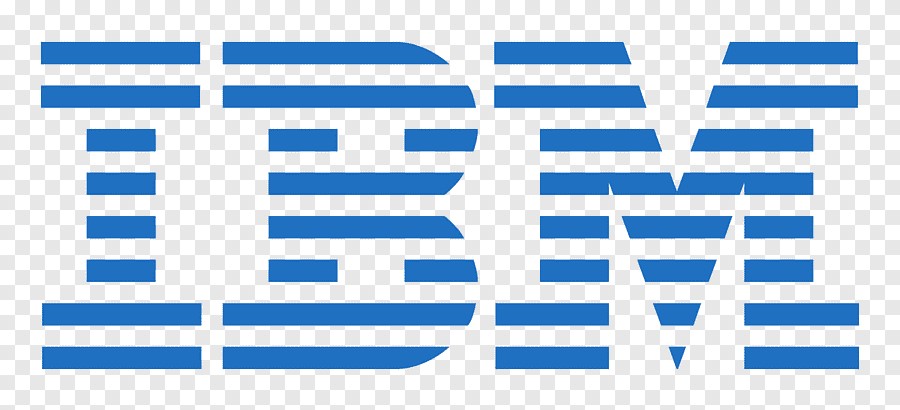There are relatively few names in graphic design that demand as much respect as the great names of Paul Rand. From the background of some of the world’s most iconic logos, it has etched an indelible mark in the branding world. Made popular by the art genius that is Paul Rand logos, logotypes represent the cornerstones of the brand identity with a blending of simplicity, innovation, and timelessness in logo designs. This paper is an attempt to reflect on the legacies of logo designs by Paul Rand and their subsequent influence on modern branding.
Part 1: The Life and Legacy of Paul Rand
Paul Rand was arguably one of the most iconic designers that practiced in the 20th century and died in 1996. Also, he worked for many years, and throughout his career, he earned his reputation for design minimalism, which shaped the branding industry. His experience working in the corporate estate including branding for IBM, ABC, and UPS enabled him to design perfect logos to capture the eternity.
Key Milestones in His Journey as a Designer
Paul Rand logos were a designer from the 1930s, when he studied at Pratt Institute in Brooklyn. Over the years, he would perfect his craft and become a major figure in the world of graphic design. Some of the key highlights of his career are:
- 1939: Rand receives his first important design commission for an American magazine.
- 1950s: Design of the iconic IBM logo, which became a defining moment in his career.
- 1960s: His design work for ABC and UPS solidified his status as a leader in branding.
- 1980s: Rand became a prominent educator, sharing his knowledge with the next generation of designers.
Rand’s Approach to Graphic Design and His Philosophy
The design approach of Rand was based on simplicity, functionality, and clarity. He once said, “Design is so simple, that’s why it’s so complicated.” For him, the purpose of design was not just to make something beautiful but to communicate an idea. He was known for using bold shapes, a limited color palette, and clear typography to create designs that were both visually striking and easily recognizable.
Part 2: What Makes Paul Rand Logos Stand Out?
It is where an illustration of a logo can convey the whole meaning of the brand and be remembered for a long period. He had such crucial things to mention, the most significant of which were the following:
- Simplicity: He believed that an impression should be simple enough for easy recognition in one glance. He eliminated most of the elements that would make his designs timeless and diverse.
- Meaningful Design: Every logo Rand designed had a clear connection to the brand it represented. Whether this was accomplished through symbolism or color choice, Rand’s logos always managed to convey the heart of the brand and its purpose.
- Timelessness: The fact that Rand’s logos have stood the test of time for so many years is evidence that simplicity and good design endure over many decades.
The Use of Simplicity, Color, and Geometry in His Designs
One of the defining characteristics of Paul Rand logos is that they are very simple. He often used geometric shapes to come up with a clean and recognizable design. Examples of his works include the famous IBM stripes, the bold, circular ABC logo. These are some examples where simplicity in forms helps make an impactful statement.
How Rand Balanced Creativity with Functionality
While Paul Rand logos were quite creative, all his designs had a practical appeal. He realized that the final purpose of any logo is to use it in multiple types of media and media presentations, from a business card to a billboard. Therefore, all his logos were so made to be elastic and scaly, ensuring it never loses impact regardless of where it is to be placed.
Part 3: Iconic Logos Designed by Paul Rand
Paul Rand logos, visionary graphic designer, changed the face of logos. Minimalist design, with accuracy and precision to depict brand identity, has marked Paul Rand’s designs as the iconic symbols in the corporate world. Let us explore a few of his influential logos here by understanding the process, meaning, and significance behind each one.
1. IBM
When Paul Rand logos were assigned to design a new logo for IBM in the 1950s, he wanted to reflect the technological advancement of the company but keep it simple. Bold, geometric lines created a powerful visual impact while horizontal stripes added a feeling of movement and modernity. The logo symbolized IBM’s commitment to innovation, making it a leader in the technology industry.

2. ABC
The simple lettering type has become quite meaningful to identify something as synonymous of the product which is simply labeled as an emblem of some type. To make such a one required to look innovative, this thing Rand did before everyone and so created in the year 1962 such design for logo representing ABC Network or ABC group under his brilliant approach, who added a great amusement with bold lettering.

3. UPS
In 1961, Rand was commissioned to re-design the UPS logo because the company changed from a small parcel delivery service to a worldwide logistics leader. His redesign represented simplicity, professionalism, and trust. The design consisted of a clean, defined shield with an understated usage of the initials of the company. The use of brown and gold was intended to show strength and reliability to meet the delivery service excellence offered by UPS.

4. Westinghouse
In 1960, when Paul Rand was hired to re-design the Westinghouse logo, he created a clean, contemporary symbol that precisely captured the heart of Westinghouse as a company that was pushing the boundaries of innovation. The letter “W” was stencilled to symbolize the electric flow of the company’s business, which involved the manufacturing of electrical equipment.

Part 4: The Philosophy of Simplicity in Rand’s Logos
Another person of high influence in developing the philosophy and principles of graphics design was Paul Rand logos. Actually, he supports the philosophy that a logo in design should at no time be an over-complication but functional yet aesthetically pleasing. Rand’s philosophy remains one of the main principles or sayings followed in the global world of design.
Exploring Rand’s Belief in the Importance of Simplicity in Design
For Rand, simplicity made a logo more memorable and adaptable for use in a variety of applications. He realized that a great logo should not only represent the brand’s identity but be instantly recognizable and timeless. Simplicity for Rand was not reduction of details but was more about discovering the essentials conveying a brand’s message clearly and powerfully.
Case Studies of Logos Where Simplicity Played a Major Role in Their Effectiveness
Most effective logos that feature IBM, ABC, and UPS were all works of Rand, showing how simplicity can shape a logo to work effectively. Most of the logos mentioned avoid unnecessary complications but only focus on simple clean lines, powerful shapes, and modestly colored backgrounds. These are illustrations of how by avoiding much complexity in her logos, Rand’s minimalistic approach brought a lasting impression about brand identities.
How Modern Brands Continue to Adopt This Philosophy
Today, many modern brands adopt Rand’s philosophy of simplicity in their logo designs. Companies like Apple, Nike, and Google have embraced clean, straightforward logos that are easily recognizable and versatile across digital and physical platforms. Rand’s influence is evident in the continued success of these designs, proving that simplicity remains a timeless and powerful design principle.
Part 5: The Evolution of Logo Design After Paul Rand
With his body of work, Paul Rand logos allowed logo design in the 20th and 21st century. Most branding ideas applied now come from Paul’s minimal approach; thus, the contemporary use of logos nowadays applies the principle still to the date. This section focuses on the survival in current trends as how technology continues to play in molding the face of the logos.
How Paul Rand’s Design Principles Continue to Influence Today’s Logo Trends
Paul Rand logos design philosophies are part of the current movement toward minimalist geometric logos. Contemporary brands pay much attention toward creating clean simple logos that may be easily spread across different devices. That is why, on their own, designs must be timeless, scaled, and communicated easily in a modern branding world, which makes Rand still relevant.
A Look at Contemporary Brands That Reflect Rand’s Legacy
Airbnb, Spotify, and FedEx are some of the modern brands that have adopted the minimalist philosophy by Rand. By embracing the design philosophy of Rand, these companies have developed logos that attract customers and are also flexible enough for use in digital and physical channels.
The Role of Technology in Modern Logo Design and How It Has Enhanced Creativity
Technology has changed logo design drastically; it is almost limitless in its creativity and sharp in execution with regard to the process. In contrast, basic foundations of the design philosophy are those of Rand, but this technology provides scope for creativity and innovative thinking to transform logos into striking visual as well as a well-functioning device in this age of the Internet.
Part 6: Arvin AI – Revolutionizing Logo Design and Branding
Arvin AI is a revolution that uses artificial intelligence to create the perfect logo, making the entire process extremely easy for its users. Businesses, designers, and entrepreneurs are given the possibility to design a logo in minutes and make it highly professional. Using advanced algorithms together with user-friendly tools, Arvin AI revolutionizes the face of logo design with smooth and efficient workflow. Whether you are a startup or an established brand. Arvin AI simplifies the process of branding by allowing users to create unique and effective logos.
Key Features of Arvin AI:
- AI-Powered Logo Creation: It uses advanced algorithms to generate custom logo designs based on user preferences.
- Fast and Efficient Workflow: It speeds up the logo creation process, reducing the time required to design and refine logos.
- User-Friendly Interface: Simple, intuitive tools that allow the application to be easily accessed not only by the designers but even to non-designers.
- Personalization Options: Avails customizable template and design items for tailored solutions in branding
- High-Quality Output: Brings professional logo designs that have scalability and applicability in various digital and printed media.
Steps to Use Arvin AI for making Logos
Step 1: Visit the Arvin AI Website
Open your web browser and access the design page of the Arvin Logo Maker site to start creating your logos.

Step 2: Fill out Your Business Information
Fill in necessary business details like your business name and category. This information allows the AI to create designs specific to your brand.

Step 3: Give Industry Name
Select an industry from the list provided. This process narrows down the logo styles and types for the AI to fine-tune based on your choice.

Step 4: Pick the Style
Browse through the style list presented and choose one that is relevant to your brand’s vision. If you still don’t like it, just skip this step and let the AI take its default inspiration.

Step 5: Logo Ideas
The AI will create various logo designs according to the inputs provided by you. Review the ideas that appeal to your brand image.

Step 6: Personalize Your Logo
Refine your chosen design by making some changes such as colors, font, icon, and layouts to resemble your style.

Step 7: Download Your Logo
Once you satisfy with the final design, download your logo in formats like PNG or SVG. These formats ensure compatibility for use on websites, social media, and print materials.

Conclusion
Paul Rand logos legacy is in the logo designs that he has pioneered in the communication language of present-day branding. He changed the way business applied logos with his minimalist tendencies centered on clarity, simplicity, and timelessness. Some of his logos include IBM, ABC, and UPS among many others. He has inspired many designers and businesses for many years. In today’s digital world, tools such as Arvin AI allow companies to craft logos in the exact same simplicity and effectiveness that characterized Rand’s work so that his legacy will live on in contemporary branding.
FAQs about Paul Rand Logos
What made Paul Rand logos so successful?
Paul Rand logos became successful due to their being simple, timeless, and clear. The approach he followed was that creativity and functionality together made his designs instantly recognizable, and it suited all the different media.
What did Paul Rand do in order to revolutionize logo design?
In general, Paul Rand redefined logos as being mostly conceptual thinking over simplicity. What people looked for in good logos was for them to embody a brand essence, not merely aesthetically pleasing. Such balance between creativity and functionality placed logos that visually impressed yet offered deeper meaning before people.
Can Arvin AI use the style inspiration from Paul Rand to create one for me?
Yes, you can create logos inspired by Paul Rand logos minimalist style using Arvin AI. This AI-powered tool helps you design logos that reflect the simplicity, clarity, and iconic nature of Rand’s work.
What are the key factors to consider when designing a logo?
All the factors consider when designing a logo. It should be simple, scalable, versatile, and relevant to the brand. A good logo easily readable, and viewable on several platforms.






